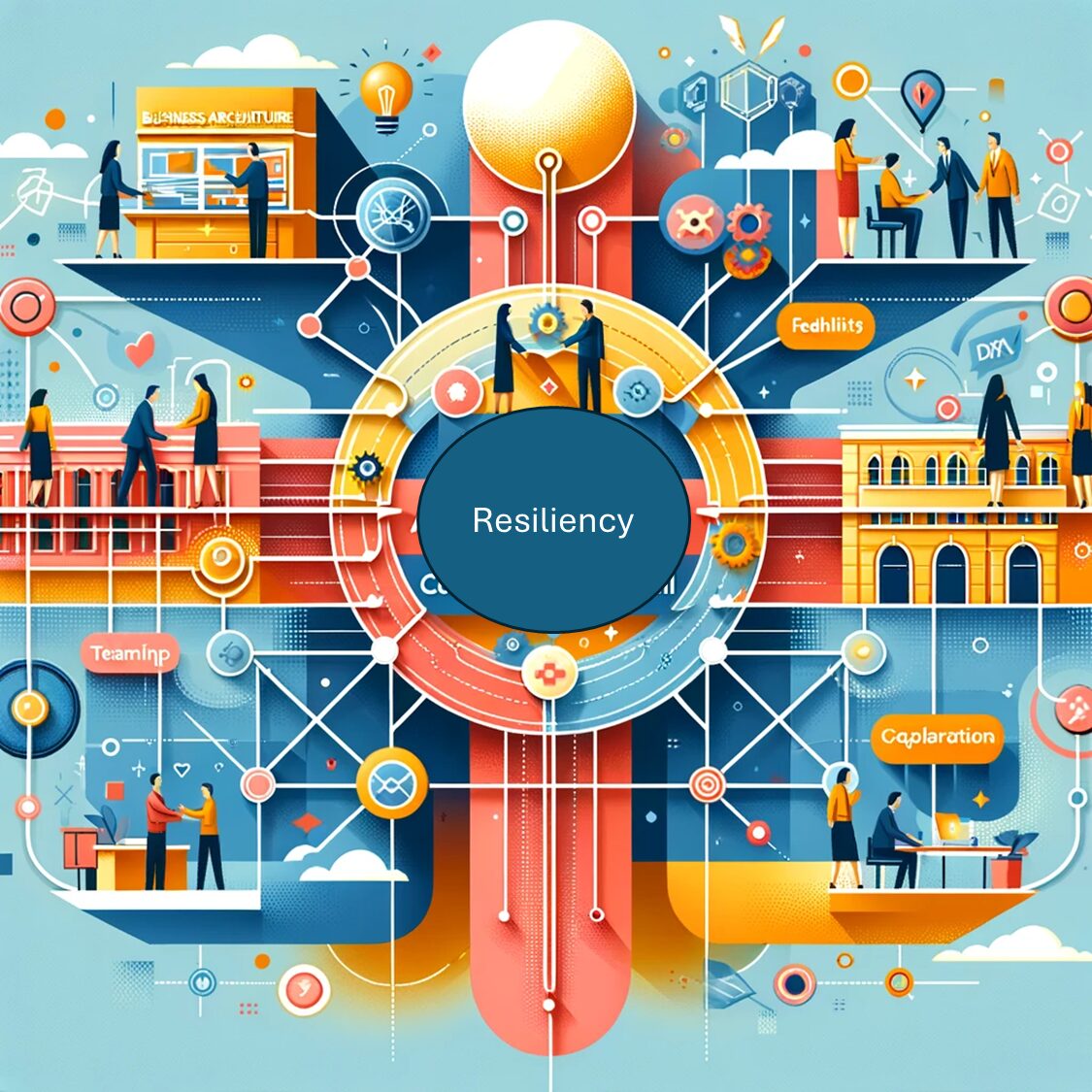
Resilience by Design: How Business Architecture Fortifies Organizations for the Future.
In our current landscape of rapid technological evolution, unpredictable market shifts, and unexpected global events, one thing is certain: the future will be rife with challenges and disruptions. Businesses can no longer react to change; they must become proactively resilient to ensure survival and continued success. This is where business architecture lays the foundation for building future-ready organizations.
Beyond Mere Survival: Anticipating and Thriving
Resilience through business architecture goes beyond simply weathering storms—it’s about designing an organization that can anticipate challenges, adapt fluidly, and even exploit change as an opportunity for growth. A strategically designed business architecture is a fortified framework that empowers the organization to navigate uncertainty while maintaining its core purpose and values.
Pillars of a Resilient Architecture
Let’s delve into the key aspects of business architecture that create this fortified foundation:
- Scenario Planning: Business architecture isn’t about a single, rigid plan. It encourages the exploration of multiple potential futures, mapping out business capabilities and responses to varying scenarios. This helps companies identify risks early and have well-conceived backup strategies—survival plans and ways to capitalize on disruption.
- Modular Design: Gone are the days of monolithic, inflexible business structures. Business architecture champions a modular approach where processes, information systems, and even organizational units can be reconfigured swiftly in response to change. This is like having an adaptability toolkit that is always ready to be deployed.
- Redundancy and Decentralization: Critical business capabilities should never rely on single points of failure. Business architecture helps identify potential vulnerabilities and builds redundancies for physical assets and knowledge bases. Decentralizing decision-making can further increase resilience and speed of response.
- Data-Driven Agility: Accurate and up-to-date information is power in times of uncertainty. A well-defined business architecture ensures seamless data flow throughout the organization, enabling swift and informed decisions when circumstances change. Data visibility is crucial for identifying trends and pivoting strategies effectively.
- Culture of Learning and Adaptation: Technology alone is insufficient. Resilience depends on a mindset of continuous learning and adaptation throughout the organization. Business architecture supports this cultural change by promoting open communication, collaboration, and a willingness to experiment and embrace calculated risks.
Future-Proofed by Design: Reliable Resilience
Here are just a few examples of how business architecture drives resilience across various industries:
- Supply Chain Resilience: By mapping supplier networks and dependencies, companies can pinpoint potential disruptions and proactively diversify critical resource supplies. This mitigates risk from disruptions like natural disasters or geopolitical instability.
- Cybersecurity Robustness: Business architects help design systems that prioritize security data protection and have contingency plans for breaches. This resilience is even more important with the increasing remote workforce.
- Market Agility: With a deep understanding of core capabilities, businesses can swiftly pivot resources towards emerging demands and new market opportunities, seizing them before competitors catch on.
Building Your Resilient Roadmap
Here’s how to start integrating resilience into your business architecture:
- Embrace Uncertainty: Shift the mindset from perfect prediction to readiness for multiple scenarios.
- Stress-Test Your Architecture: Simulate disruptions to expose vulnerabilities and identify areas for fortification.
- Invest in Flexibility: Prioritize modular systems, scalable processes, and cross-trained employees who can fill multiple roles.
- Cultivate the Right Culture: Proactiveness, continuous learning, and a willingness to take calculated risks are just as important as any technical plan.
The Future Belongs to the Resilient
In the increasingly complex and unpredictable business world, a ‘business as usual’ attitude is a recipe for obsolescence. Companies that proactively architect for resilience are the ones that will not only weather the coming storms but will also emerge even stronger on the other side. Business architecture is the strategic blueprint for building these future-ready, resilient organizations.



